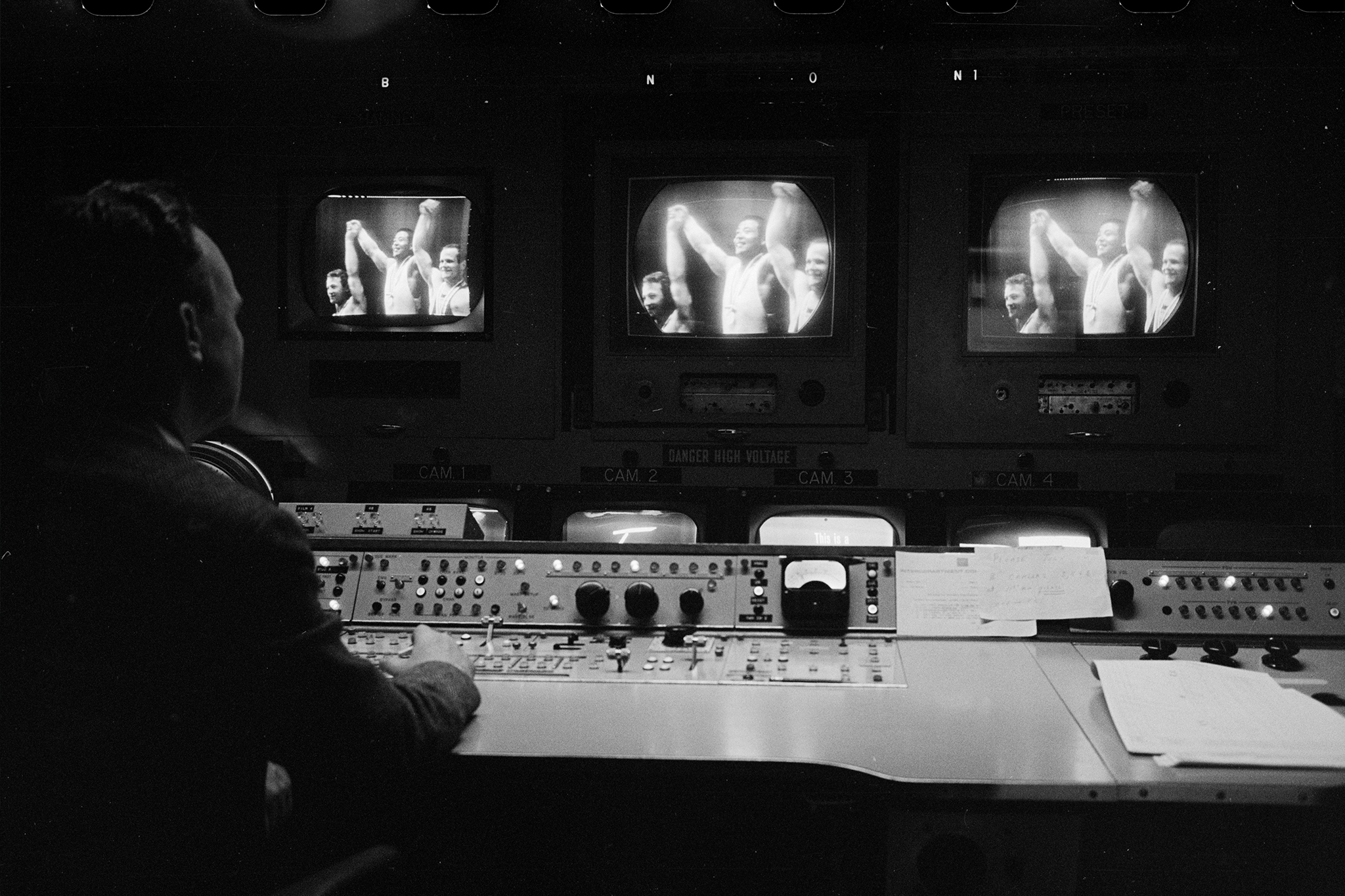For the latest in our Japan Back Then series, we’re returning to the 1960s, a decade full of mass protests and transport disasters. On a more positive note, it was also an era of great economic growth that will be most remembered on these shores for the 1964 Tokyo Olympics, an event that showcased the emergence of an advanced and hi-tech nation that had risen from the ashes of war.
The Anpo Protests
The Treaty of Mutual Cooperation and Security between the United States and Japan was signed on January 19, 1960. Commonly referred to as the Anpo Joyaku, it permitted the presence of U.S. military bases on Japanese soil. There were several protests prior to and following the signing of the agreement. In June 1960, hundreds of thousands surrounded the National Diet building on a nearly daily basis. Michiko Kanba, a female university student, was killed during clashes between the police and demonstrators. U.S. President Dwight D. Eisenhower’s trip to Japan was also canceled after the car of James Hagerty, his press secretary, was attacked. Following all the turmoil, Prime Minister Nobusuke Kishi resigned from office. He was succeeded as PM by Hayato Ikeda.
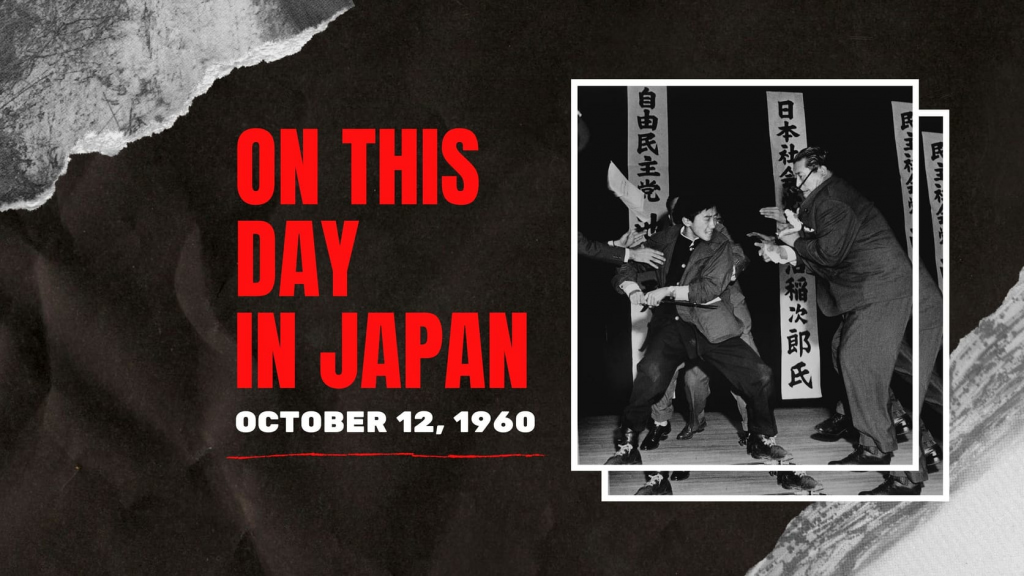
A Televised Political Assassination
Political tensions in Japan were running high throughout the first year of the decade. On October 12, 1960, 17-year-old ultra-nationalist Otoya Yamaguchi stormed the stage at Hibiya Hall in Tokyo during a televised parliamentary debate to stab Japan Socialist Party leader Inejiro Asanuma with a samurai sword. Around 1,000 people were in the hall, including Prime Minister Ikeda. The high school student, who was still in uniform, smiled as he was led away by the police. Asanuma was pronounced dead before arriving at the hospital. A polarizing figure, he’d previously been criticized, even by members of his own party, for his pro-China stance. The perpetrator killed himself in his juvenile detention cell three weeks after the incident. Yasushi Nagao won a Pulitzer Prize for his photograph of the stabbing.
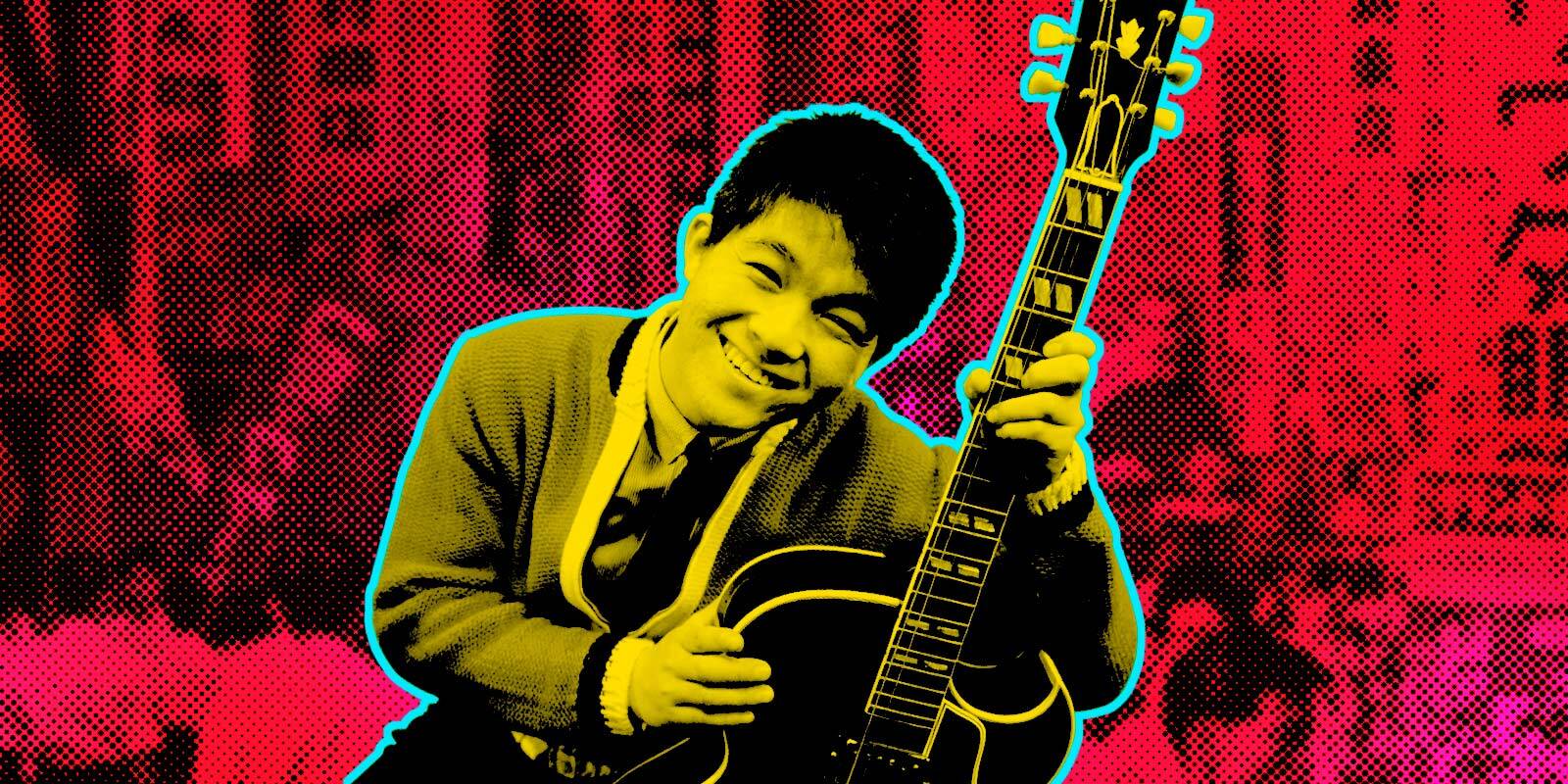
Sukiyaki: A Global Success Story
Released in October 1961, Kyu Sakamoto’s hit “Ue o Muite Arukou” remained as the highest selling single in Japan until January 1962. The following year, British entertainment business executive Louis Benjamin brought the record to the U.K. Feeling the title may be too difficult for English-speaking audiences, the song, which was written by composer Hachidai Nakamura and lyricist Rokusuke Ei, was renamed “Sukiyaki.” It reached the top 10 in the British charts, but was even more successful in the States, becoming the first track by an Asian artist to top the Billboard Chart. It went on to sell more than 13 million copies worldwide. The catchy track has since been covered or sampled in several languages by the likes of A Taste of Honey, Snoop Dogg and Avicii.
Mikawashima and Yokohama Train Crashes
Two of the deadliest railway accidents in Japan’s history occurred in the early-1960s. The first took place near Mikawashima Station in Arakawa, Tokyo. At 9:36pm on May 3, 1962, a freight train that missed a red signal collided with a departing passenger train. Though a fail-safe mechanism diverted the former onto a safety siding — thus avoiding a head-on collision — another passenger train, unaware of the initial accident, came down the tracks six minutes later and smashed into the back of the first commuter train. The crash resulted in 160 deaths and 296 injuries. Eighteen months later, 162 people were killed and 120 injured between Tsurumi and Shin-Koyasu stations in Yokohama. Again, it involved two passenger trains and a freight train that derailed.
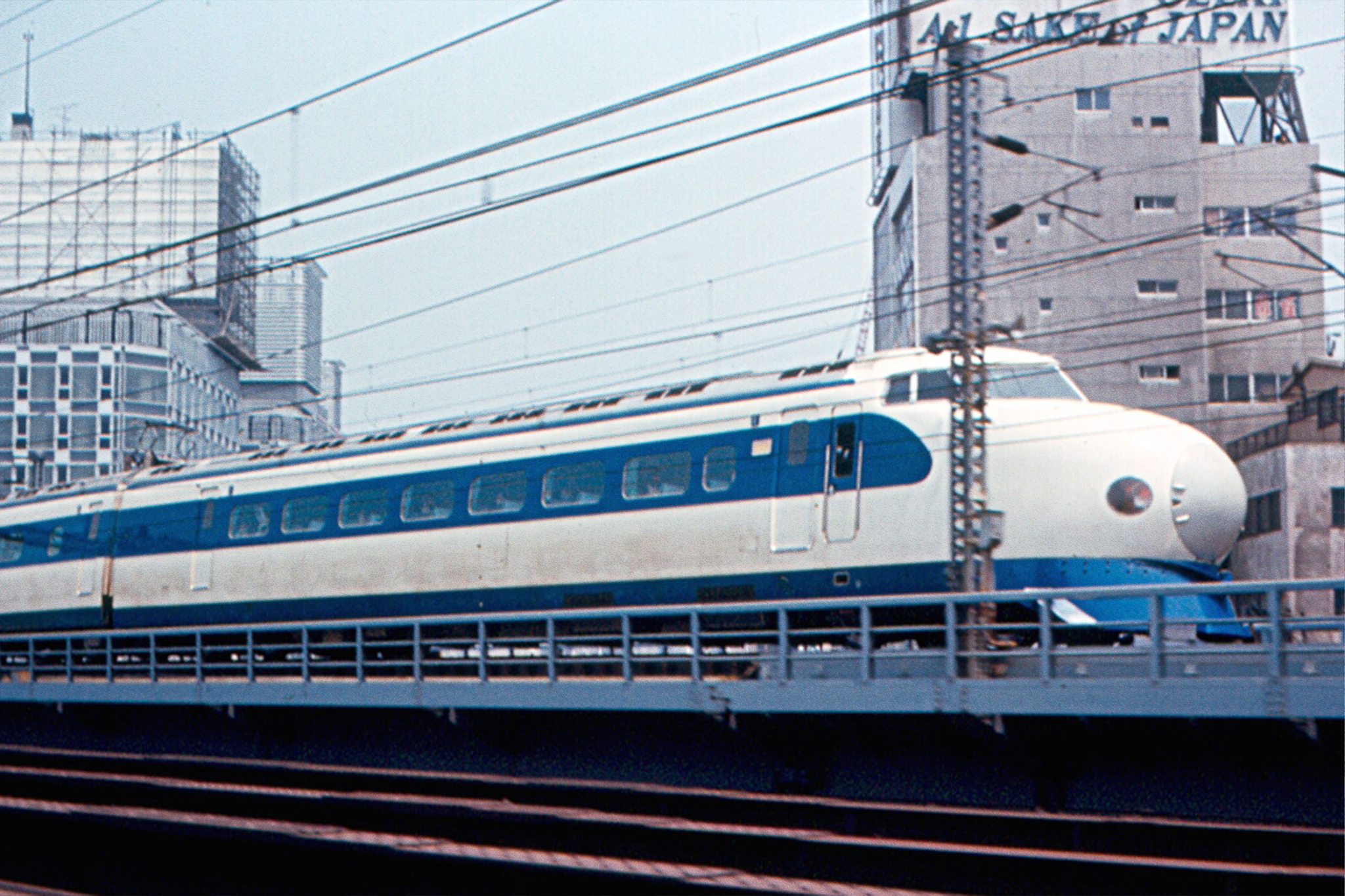
Photo by Roger W via Flickr
The Birth of the Shinkansen
Sticking with the railway theme, we turn to one of Japan’s greatest-ever inventions. At 6am on October 1, 1964, two bullet trains (dangan ressha) left simultaneously from Tokyo and Shin-Osaka stations. These departures marked the inauguration of the 0 Series Shinkansen, which was launched nine days before the Tokyo Olympics opening ceremony. The world’s fastest trains, they reached speeds of up to 210 kilometers per hour. That made it possible to get from the capital to the Kansai region in around four hours, almost three hours shorter than the conventional limited express. A year later, that same journey was shortened by another 50 minutes. Today, Shin-Osaka can be reached from Tokyo in two and a half hours on the Nozomi bullet train.
The 1964 Tokyo Olympics
On October 10, 1964, Yoshinori Sakai, who was born on the same day as the Hiroshima bombing, lit the Olympic cauldron to signify the opening of the 1964 Tokyo Summer Games. The first to be held in Asia, it was a huge success, helping to create a new global perception of Japan as a modern and peaceful nation following previous eras of military aggression. Japanese athletes also impressed, winning a record 16 gold medals. The highlight came in women’s volleyball on the last night of the Games. Japan’s team, nicknamed the “Oriental Witches,” took on a bigger and more powerful Soviet Union side, defeating them 3-0. The TV audience figure was 95%, a record that remains to this day. “Everything stopped for that final point,” recalled author Robert Whiting.
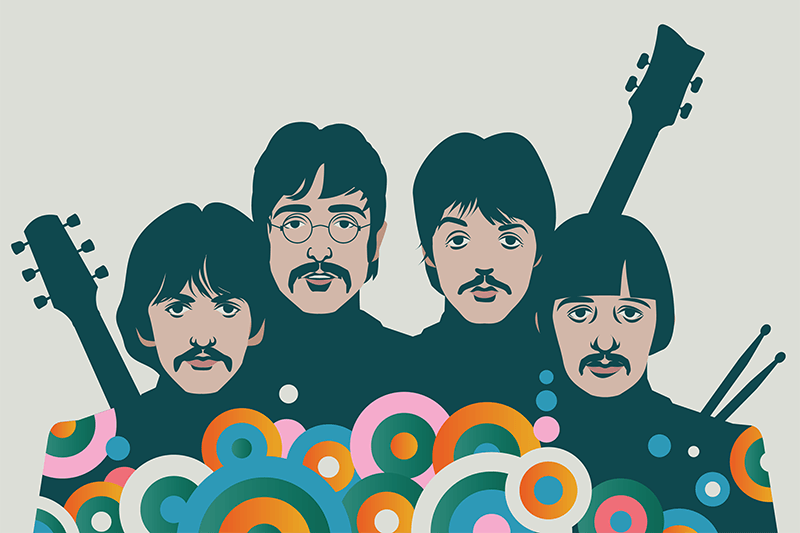
The Beatles at the Budokan
Three of Japan’s gold medals at the Olympics were won by judoka at the newly built Nippon Budokan. Two years later, the esteemed venue hosted its first rock concert as The Beatles came to town. It was their only tour of the country, though not everyone was pleased to see them. “You had all these right-wing people protesting and yelling from their cars,” the late rock star Yuya Uchida, who was one of the warm-up acts, told Tokyo Weekender prior to the 50th anniversary of the show. The Fab Four headlined three nights, beginning on June 30, 1966. On that same day, four people died in a fire in Shizuoka, leading to the arrest of Iwao Hakamada. He became the world’s longest-serving death row prisoner.
A Series of Aviation Disasters
Flying in and out of Tokyo must have been a frightening prospect in 1966. Incredibly, there were five aviation disasters that year. The first was All Nippon Airways (ANA) Flight 60, which mysteriously crashed into Tokyo Bay on February 4, killing all 133 on board. A month later, Canadian Pacific Air Lines Flight 402 crashed due to poor visibility at Haneda Airport during a stopover in Japan. Only eight of the 72 on the plane survived. The next day, all 124 on BOAC Flight 911 died after it encountered severe turbulence over Mount Fuji. In August, five crew members were killed as a Japan Airlines Convair 880 caught fire. ANA Flight 533 then crashed into the Seto Inland Sea in November, killing all 50 on board.

The ¥300 Million Robbery
It was one of the most daring heists ever seen on these shores. On a rainy December morning in 1968, a lone robber impersonating a police officer convinced four bank employees who were transporting bonuses for Toshiba workers that their manager’s house had been destroyed in an explosion — he had received several bomb threats in the weeks prior to the incident — and that their vehicle was about to blow. The robber then crawled underneath the car, and secretly ignited a warning flare. As the workers all escaped, he got behind the wheel, before driving off with all the money inside. Though known as the ¥300 million robbery, the actual amount was said to be just over ¥294 million. The culprit has never been brought to justice.
University Protests
The decade ended as it started in Japan with protest rallies making headlines. Revolutionary fervor returned in the mid-60s with demonstrations taking place at the prestigious Keio and Waseda universities. Things then escalated in 1968. Protests erupted around the globe and Japan was no exception. At the University of Tokyo, students, angry about the working conditions of medical interns, occupied Yasuda Auditorium, the central symbol of the campus. At Nihon University, thousands of students barricaded themselves inside, furious over the embezzlement of ¥2 billion of university funds by administrators. Disturbances at educational institutions soon spread nationwide. By 1969, the number of universities experiencing strikes or occupations increased to over 150. By the end of the year, though, most barricades had been dismantled and the violence eventually dissipated.
In the Charts
Popular Singles: Ue wo Muite Arukou (Kyu Sakamoto), Itsudemo Yume wo (Yukio Hashi and Sayuri Yoshinaga), Konnichiwa Akachan (Michiyo Azusa), Tokyo Gorin Ondo (Haruo Minami), Yawara (Hibari Misora).
Popular Movies: Yojimbo, Sanjuro, High and Low and Red Beard (Akira Kurosawa), Harakiri (Masaki Kobayashi), King Kong vs. Godzilla and Mothra vs. Godzilla (Ishiro Honda), Woman in the Dunes (Hiroshi Teshigahara) Tokyo Olympiad (Kon Ichikawa).
Television Debuts: Musume to Watashi — the first asadora (1961), The Samurai (1962), Astro Boy (1963), Ultraman”(1966), Sazae-San (1969).
Updated On August 25, 2023

